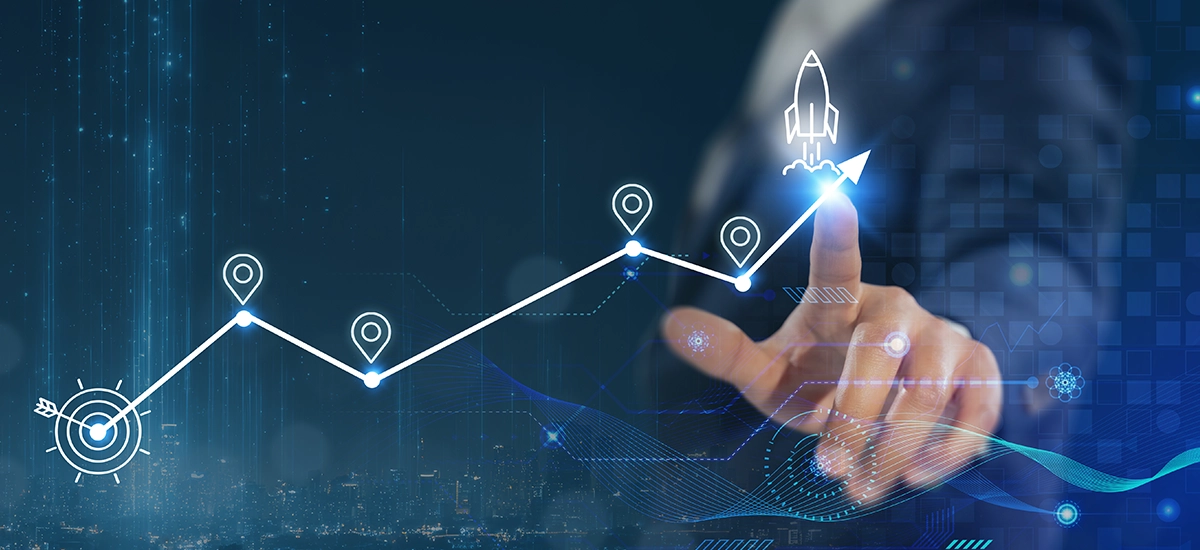
Data is not only a resource in today's fiercely competitive environment; it is the driving force behind all AI and ML aspirations. Yet for many enterprises, that resource is scattered across fragmented, siloed systems, making it difficult to connect the dots and act with speed. The outcome is slower innovation, increased complexity, and opportunities slipping away to faster-moving competitors.
Microsoft Fabric changes the game. By consolidating your entire data estate into a single, trusted source of truth, it removes the roadblocks that hold back transformation. This unified foundation not only enables advanced analytics but also sets the stage for AI-driven innovation across the enterprise. Organizations can transition from data chaos to a platform that is ready for the future with the correct migration strategy, which will speed up insights, increase agility, and transform vision into quantifiable business impact.
AI challenges uncovered: Are data silos blocking your progress?
Many enterprises work with separate systems, like different data warehouses, operational databases, unmanaged data lakes, and countless spreadsheets. These silos lead to:
- Poor data discoverability and limited access control, making it harder for teams to find and trust the right information.
- Inconsistent, incomplete, and duplicated datasets that reduce confidence in decision-making.
- More time and effort spent preparing data for AI models, delaying insights and increasing costs.
- Inability to scale AI projects beyond initial pilots, limiting their business impact.
- Disjointed reporting and analytics, forcing leaders to rely on partial views rather than a holistic picture.
- Missed opportunities for advanced analytics and AI-driven innovation due to the lack of a single, trusted data foundation.
In short, without unified, well-governed data, even the most advanced AI investments struggle to deliver meaningful returns.
The Fabric approach – Is a unified data platform the key to unlocking AI potential?
Microsoft Fabric addresses these challenges with its unified data foundation. Fabric eliminates the hassle of managing various tools and environments by combining data engineering, data warehousing, data science, real-time analytics, business intelligence, and governance into a single SaaS platform. Its key features include:
- OneLake as a single logical data lake: All organizational data, regardless of its source, is stored and accessed through OneLake. This eliminates duplication and fragmentation.
- Open standards and interoperability: Fabric natively supports formats like Delta and Parquet and integrates seamlessly with Azure AI services.
- Built-in governance and security: Fabric manages data access, lineage, and quality according to organizational policies—critical for responsible AI.
- Copilot and AI services: Once data is consolidated and cleaned in Fabric, Copilot in Fabric and Azure Machine Learning can use it to build, train, and deploy models more quickly.
Fabric guarantees that data is always available, reliable, and prepared for sophisticated analytics by offering a single, governed environment for each phase of the data lifecycle. This cohesive strategy speeds up AI-driven innovation throughout the company while also streamlining operations.
How can Fabric migration fast-track your AI roadmap?
Moving to Fabric is more than just a technical improvement; it's a strategic change that speeds up every phase of your AI journey and lays the correct foundation.
- Step 1 – Data foundation for AI readiness
A clean, well-organized, and easily discoverable data estate is essential for efficient training and testing, and moving to Fabric guarantees that the entire data estate is AI-ready. - Step 2 – Accelerated experimentation
Data wrangling no longer accounts for 80% of data scientists' time. They can concentrate on quick experimentation and developing novel new models with a single platform. - Step 3 – Operationalizing AI at scale
With Fabric's support for MLOps pipelines and smooth integration with Azure Machine Learning, businesses can effectively deploy, manage, and track ML models at scale. - Step 4 – Democratizing AI with Copilot
Even business users can leverage AI insights through Copilot for Fabric, using natural language to run queries, create pipelines, and build reports without deep technical expertise.
Together, these steps transform AI from isolated experiments into enterprise-wide capabilities. By removing the conventional boundaries between data, technology, and people, Fabric transforms AI into a useful, scalable, and quantifiable engine of corporate expansion.
What are the smartest ways to migrate to Fabric and power your AI journey?
A successful migration to Fabric starts with a clear understanding of your existing data landscape. Assess and catalog existing data silos to identify where enterprise data is stored, how it overlaps, and the best approach for seamless integration. Next, focus on data quality and governance by building robust pipelines and frameworks, ensuring that the information feeding your AI models is accurate, consistent, and trustworthy. Equally important is to engage data and AI teams early, bringing together business analysts, engineers, and data scientists to define requirements, align priorities, and identify high-value AI use cases.
Once the foundation is set, make the most of Fabric’s open ecosystem by leveraging open formats and Azure services to expand capabilities and avoid vendor lock-in. This combination of strong preparation, cross-team collaboration, and open integration not only reduces migration risks but also shortens time-to-value. In the end, a well-thought-out strategy guarantees that your AI projects are based on a reliable, cohesive data foundation, turning Fabric from merely a platform into a driving force behind enterprise-wide AI innovation.
Is your data ready to lead the AI future?
Dismantling silos is a strategic AI enabler, not just an IT endeavor. Microsoft Fabric helps enterprises move from scattered, reactive data practices to proactive, AI-driven insights at scale. Investing in a Microsoft Fabric migration today lays the groundwork for securing tomorrow’s competitive edge with enterprise AI. It’s about unifying data into a single, trusted source of truth, making it accessible and actionable across teams. Decision-making becomes quicker, more intelligent, and more accurate when advanced analytics and machine learning models are powered by cleaner, well-governed data. This shift not only accelerates innovation but also empowers every function, including operations and customer engagement, to deliver measurable business impact. In essence, Fabric doesn’t just prepare you for the AI era; it positions you to lead it.
Ready to transform your data into a competitive edge? Let’s talk about how a seamless Microsoft Fabric migration can unlock your AI potential.




